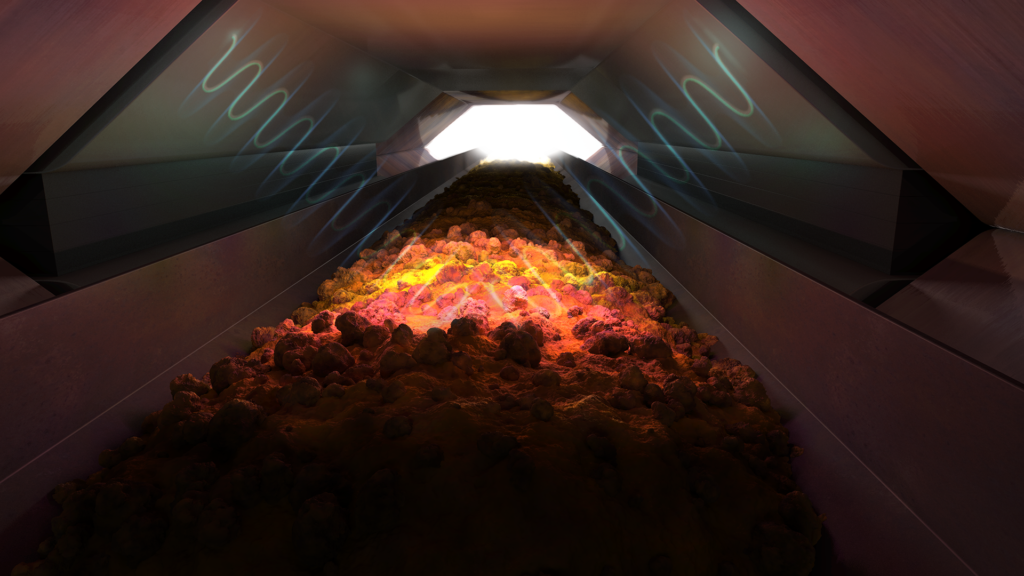
Ore moves through the analyser which uses magnetic resonance to rapidly identify high quality ore from waste.
Copper is an essential metal needed for building our cities and developing technologies for a low-emission future. Due to its high electrical conductivity, copper is used in everything from TVs and mobile phones, to wiring and car motors. Like most industrial processes, those involved in copper production are energy and water-intensive – for example, around 1600 litres of water is used to obtain the 19 kilograms of copper typically found in a medium-sized family car.
To help lower the industry’s environmental footprint, we have developed a new ore sorting solution that can slash the energy and water required for every tonne of copper produced, and it’s now available to the international market.
MRI for mining
While you might be familiar with the use of MRI scanning for imaging the human body, we’re taking advantage of magnetic resonance technology for a different purpose. We developed an ore sorting analyser that rapidly identifies ore quality so that large volumes of waste rock can be rejected before it even enters the plant. Sorting out waste rock, significantly reduces the energy and water needed for processing and associated carbon emissions.
By illuminating batches of ore with short pulses of radio waves, magnetic resonance penetrates through copper ores – much like medical MRI “sees into” human bodies – to rapidly and accurately detect ore quality. It has an advantage over other ore sorting analysers that can often only go “skin deep” to detect mineral particles on the surface of ore, producing less reliable results.
The technology has been brought to market through NextOre, a new company that we have created with our partners RFC Ambrian and Advisian Digital.
Transforming the global copper industry
The analyser could extend the life of existing mines as well ashelping to turn undeveloped, low-grade mines into production. While the productivity benefits vary depending on the characteristics of the orebody, the analyser has the potential to double the ore grade. It could represent as much as a 20 per cent reduction in processing costs in some copper mines.
In its first year, NextOre will focus its efforts on engaging the South American and Canadian markets. Magnetic resonance can also be applied to gold and iron – so the benefits of the technology could be applied to other commodities in future.
Dig a little deeper
Get a more in-depth look at our breakthrough magnetic resonance analyser and how it can be applied to benefit mines around the world.


8th July 2018 at 11:30 am
You state that you’re focussing on the Canadian and South American markets… surely you’re also talking with the folks at Olymic Dam – Australia’s largest copper mine…
Pingback: MRI to sort out copper mining waste | RFC Ambrian Limited
Pingback: MRI to sort out copper mining waste – NextOre